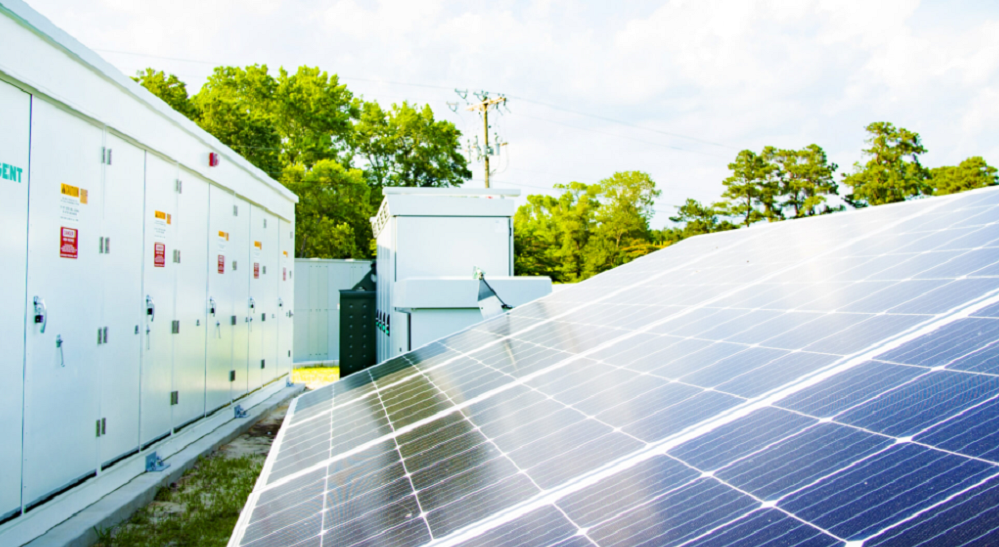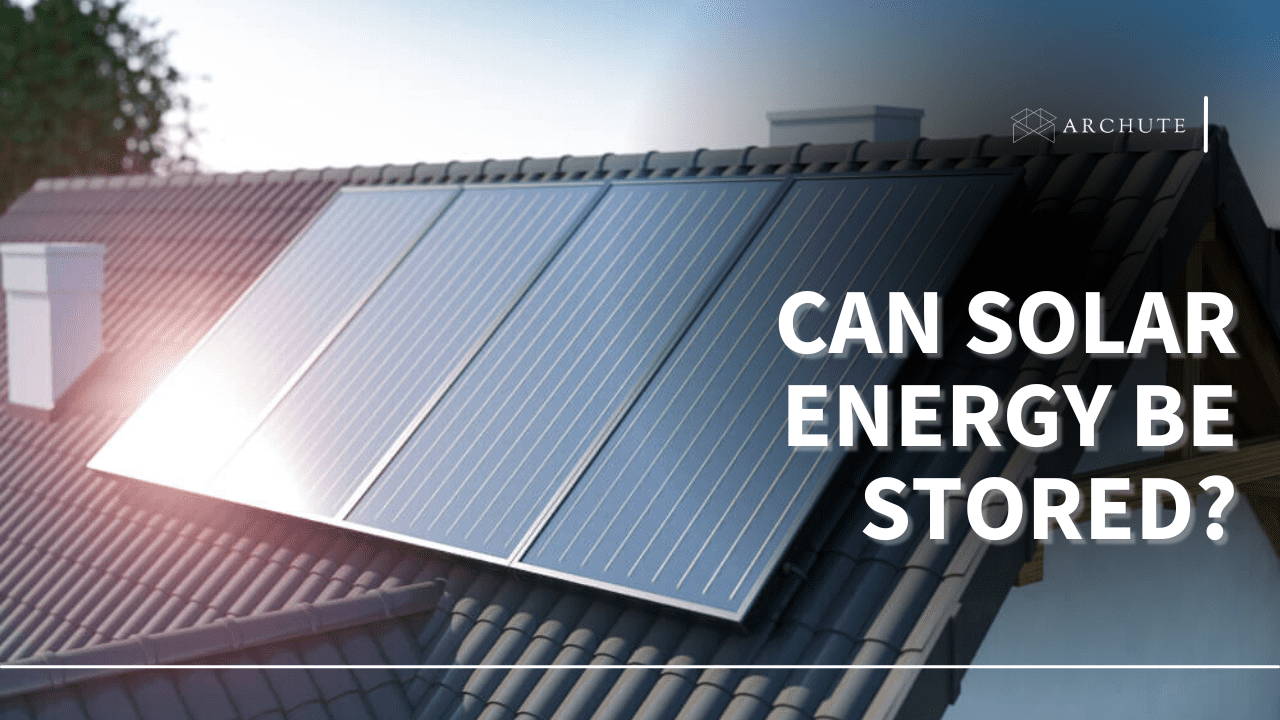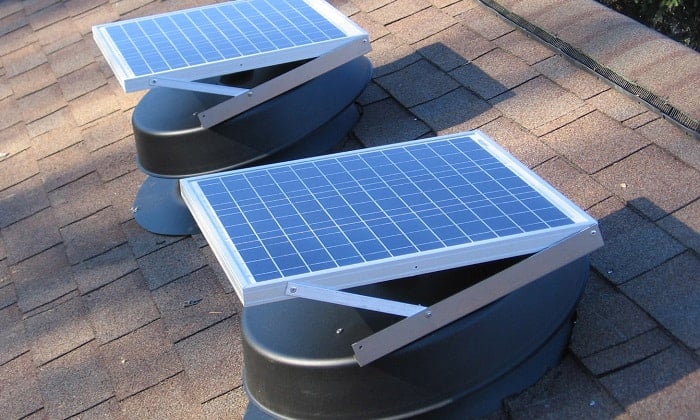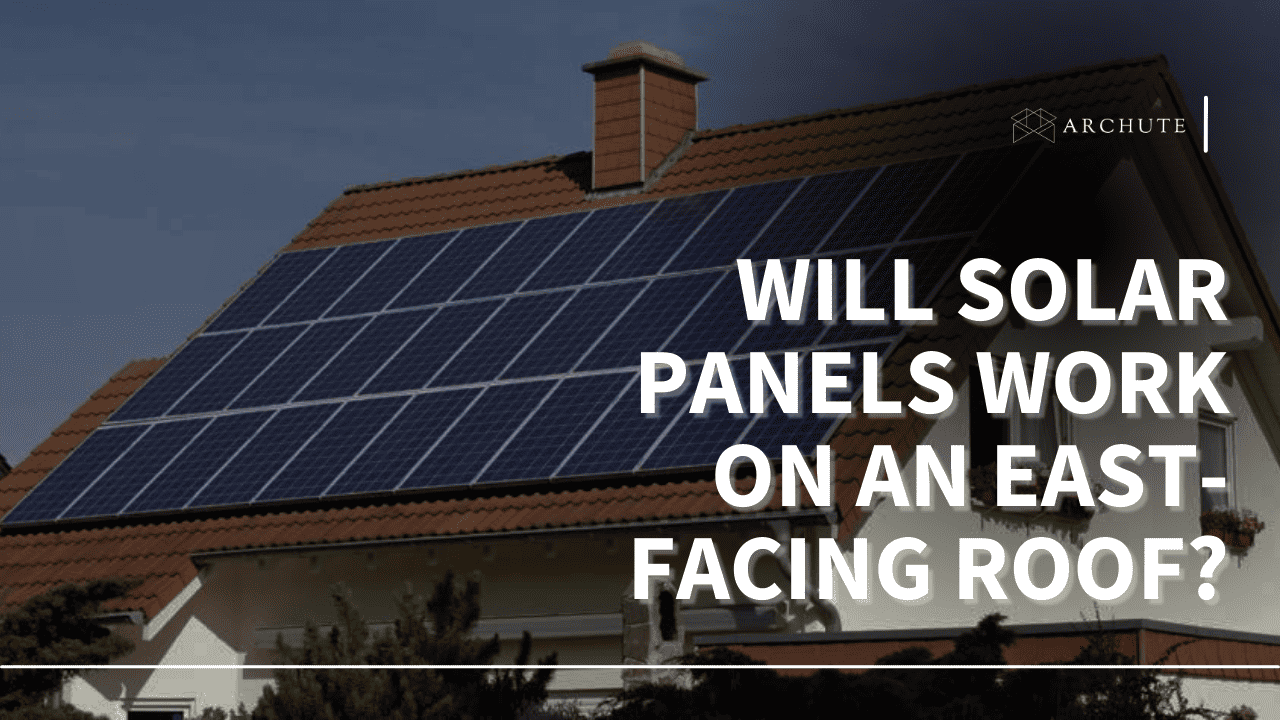Gaining some freedom from utility companies by using solar energy is a win wherever you are. Additionally, storing solar energy when the sun isn’t shining can greatly contribute to your electricity supply. Remember, the amount you can harvest can be affected by seasons, time of day, cloud cover, and rainy days. Follow along to find out whether solar energy can be stored.
Can Solar Energy Be Stored?
Yes. It can. The solution is quite simple: batteries. A battery storage system will preserve extra energy during high production when the sun shines. Lithium-ion batteries are the most common form of energy storage today. Additionally, they are perfect for consuming solar power even when there is cloud cover or rain.
Solar batteries take in the DC power that originates from the solar panels and store it for use. The inverter turns it into usable AC electricity when you need to use it to power regular household devices and appliances. As a result, you will always save more money since your system will draw energy from the battery storage instead of the power grid. Additionally, you can install solar panels yourself to be more cost-effective.
What Are the Pros of Combining Solar and Storage?
Solar panels can’t collect energy when the sun isn’t shining. This is a flaw that, unfortunately, cannot be rectified. However, it can be circumvented by solar energy storage solutions. Here are the advantages of combining solar energy with storage solutions.
a) Short-term Storage for Bolstering Solar Generation
Most solar power grids don’t do well with multiple interruptions. Therefore, short-term storage for renewable energy will ensure that quick changes in electricity generation don’t affect the output and performance of the solar system. Grid firming is a way to keep the grid stable in case of wind, solar, or hydro intermittency.

Image Source: pvmagazineindia.com
For example, a small-sized solar battery storage unit can maintain a firm and consistent power supply from the power grid in light of brief disruptions. Impediments like a passing cloud or a rainy day are precisely why we combine solar and storage.
b) Balancing Excess Solar Energy Generated
If there is no storage backup like lead acid batteries or sodium chloride batteries (also called saltwater batteries because they use molten salt), electricity generated has to be used immediately. As a result, you might have to take your solar system offline to avoid over-generating electricity.

Image Source: Solarwashington.com
Storage is important when there is little solar production and high demand for power on cloudy days, at nighttime when solar panels don’t work, or with passing clouds.
When you store solar energy, you can compensate for low energy production on slow days when grid operators need it. Additionally, storage is a way to keep excess energy as an insurance policy for absent sunlight.
c) Providing Resilience

Image Source: convergentep.com
During an electrical power disruption in the utility grid, the stored energy can keep critical services running. However, you should be careful with disruptions because solar panels can cause fires. Other than that, storage and solar can also be used for smaller operations such as portable power units and communications. Furthermore, when you store solar energy or excess electricity, it is distributed at the end of the day when its peak time for electricity usage.
Factors to Consider Before Choosing a Storage Solution
When choosing a solar storage solution, weigh your options before integrating the battery technology into your solar panels. Here are some of the factors to consider:
i) Battery Life
Of course, it goes without saying that solar cells will degrade with time. Additionally, as you use solar batteries, they will gradually decrease in their efficiency and capacity as time goes on. However, most batteries will come with an indication of their KWh (kilowatt hour). For example, depending on how you use them, you could go from 98% to 80% battery capacity. Still, solar batteries last long and reduce your carbon footprint.

Image Source: techadvisor.com
You have to select the type of battery you prefer. You can select flow, lead acid, and lithium-ion batteries—the chemical reaction in the batteries stores extra energy for backup power. Nevertheless, using stored energy in your batteries is important because the storage mediums also tend to leak energy when not used for a while.
ii) Capacity and Power

Image Source: ecoworthy.com
The right battery depends on how you use electric power and how much power you need at any given time. Since solar panels have photovoltaic cells to harness the energy, your battery capacity also matters. Additionally, battery storage capacity varies among batteries. Therefore, they all have a particular amount of clean energy that they can hold.
iii) Depth of Discharge
Image Source: medium.com
The depth of discharge refers to the battery capacity that’s been used up. As mentioned above, using your battery will gradually reduce its capacity. This is normal for all solar batteries. However, the higher the depth of discharge, the longer you can use it without requiring a recharge.
iv) Round-Trip Efficiency
The amount of energy stored versus what you can draw out, which also accounts for the power loss, is pretty high for solar batteries. This is called round-trip efficiency, which makes it environmentally friendly, and cost-effective. For example, if your solar batteries have a round-trip efficiency of 66%, it means if you feed 6 KWh, you can only draw 4KWh.

Image Source: futuregreenbattery.com
Lithium-ion batteries have the highest round-trip efficiency and are more economical in the long run. However, they fall in the 95% category. On the other hand, lead acid batteries fall in the 75%-80% range.
v) Complete Usability
While solar power generation doesn’t contribute to carbon emissions, it is 100% renewable because panels harvest energy during peak sunny hours. In some cases, with 6 hours of sunlight, your panels and energy storage system can give you 4 hours worth of energy.

Image source: tycorunenergy.com
Therefore, your solar energy system harvests and produces energy that produces electricity and thermal energy. There will always be use for both forms of energy. Furthermore, relying on solar energy drastically reduces your electric bills.
Types of Energy Storage
In the power grid, you will mostly find pumped hydro. However, there are other types of storage for solar energy. Each storage type has characteristics that make it better or different from another.
i) Pumped hydro
This technology uses surplus electric energy to pump water uphill. The water can then be released downhill to turn turbines and generate electricity for other uses when the energy supply runs low. However, this technology requires a lot of initial costs, the right landscapes, and reservoirs.
ii) Thermal Energy Storage
Thermal storage uses water or liquid salt to store energy. Water or liquid salt is a storage medium that can be cooled or heated for energy storage.The energy is stored in a tank with insulation until it’s needed. Then, the energy can be used for cooling and heating purposes. Additionally, heat is used to boil water, producing steam in thermal systems intended for electricity. The steam drives turbines to produce electrical power.
iii) Compressed Air Storage
Compressed air storage systems consist of storing pressurized air in vessels. The pressurized air will then be released to power turbines that produce electricity. Therefore the electricity generated is part of a natural gas power cycle.
iv) Electrochemical Storage
You have probably encountered electrochemical storage in laptop batteries. When an electric current of charged ions is passed into the battery, it causes a chemical reaction that stores energy. However, the process is reversed for current to flow out of the battery, creating a voltage between both electrical contacts. Electrochemical storage cells include lead-acid and lithium-ion battery storage.
v) Flywheel Storage
Flywheels can quickly provide power when needed. However, they cannot store much energy. Additionally, a large wheel is attached to a rotating shaft to generate energy. Connecting a thermoelectric generator will slow the wheel down and produce electricity. However, this method is adequate if you don’t want to store energy for long periods.
vi) Virtual Storage
This includes changing the devices we already have for better use of electricity. For example, heating or cooling a building before a power demand will allow the building to store the extra energy. In addition, this will allow the building to store cool or warm air that it can utilize in the future.
Since the price of solar storage is coming down, it is wise for home or building owners to invest in such systems to combat climate change and use solar energy stored for future use.
vii) Solar Fuels
Instead of using fossil fuels, did you know that solar fuels exist? Solar fuels can be combusted or burned to produce energy. For example, methane is one of the solar fuels used for electricity generation.
The Bottom Line
Harnessing solar power has its pitfalls. However, solar storage solutions are evolving and providing an effective way to store solar energy and release it when needed. However, it is important to remember that solar panels have become cheaper; therefore, you can harness solar benefits at a lower price.
Featured Image Sources: comparethemarket.com
















